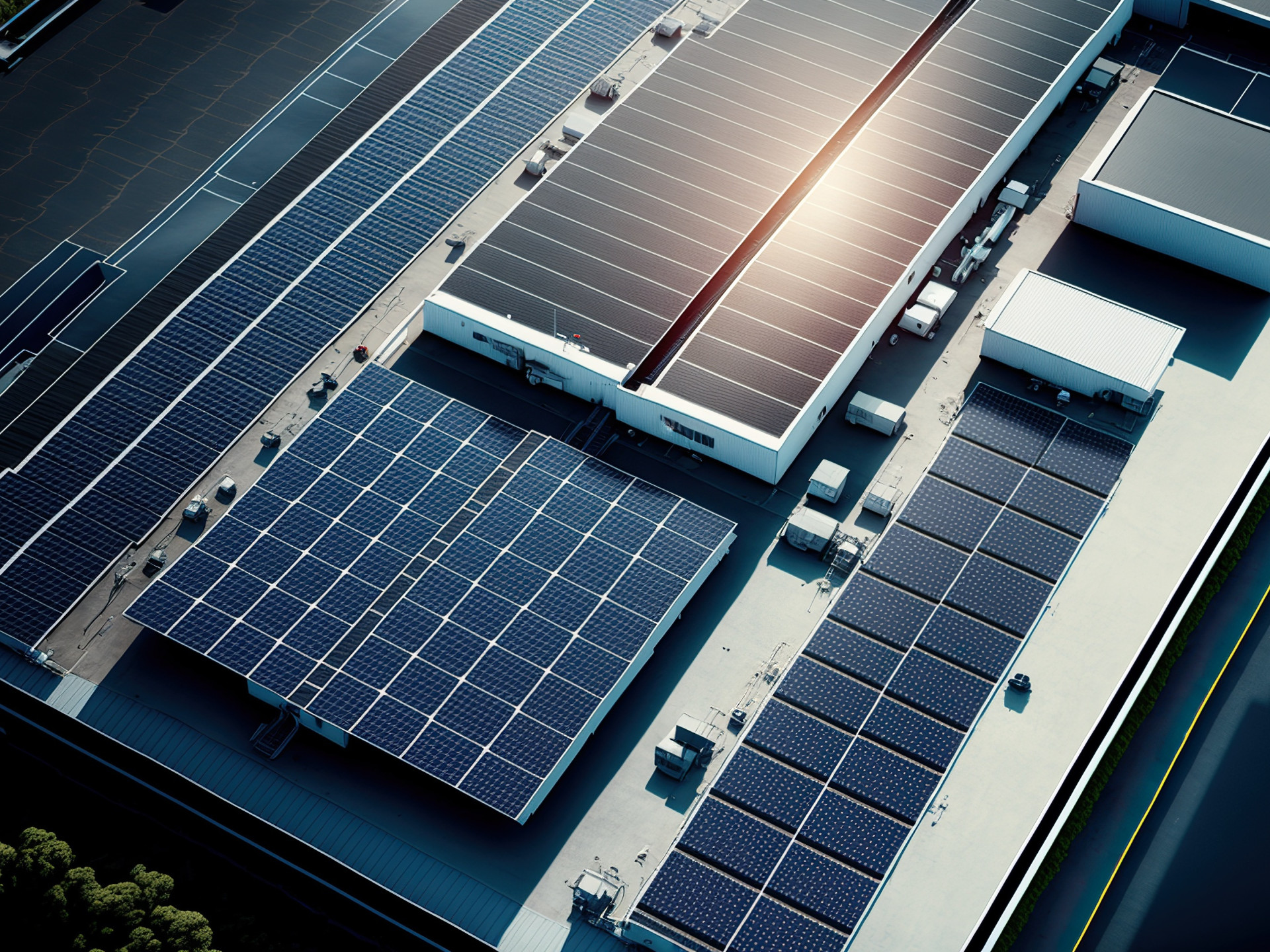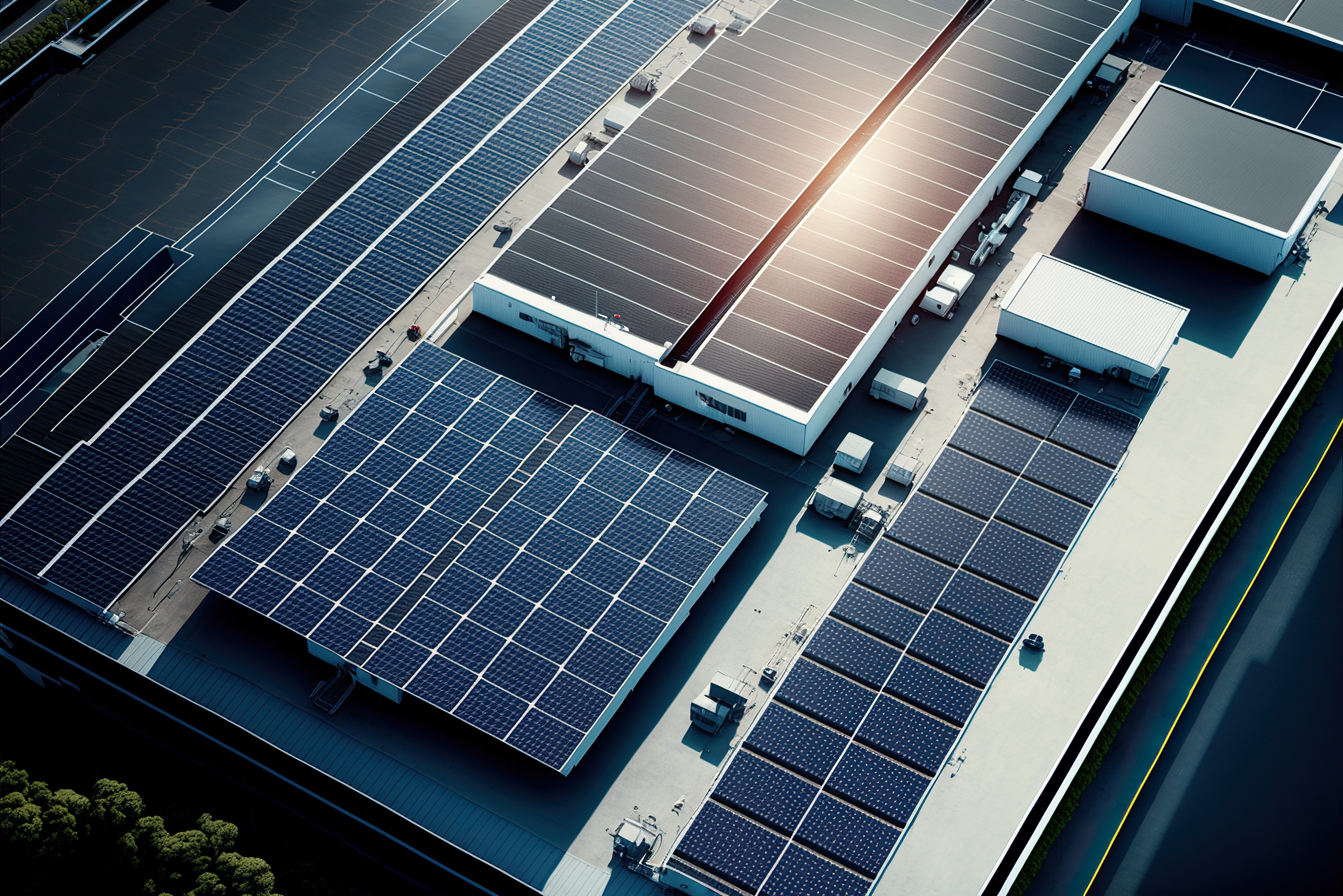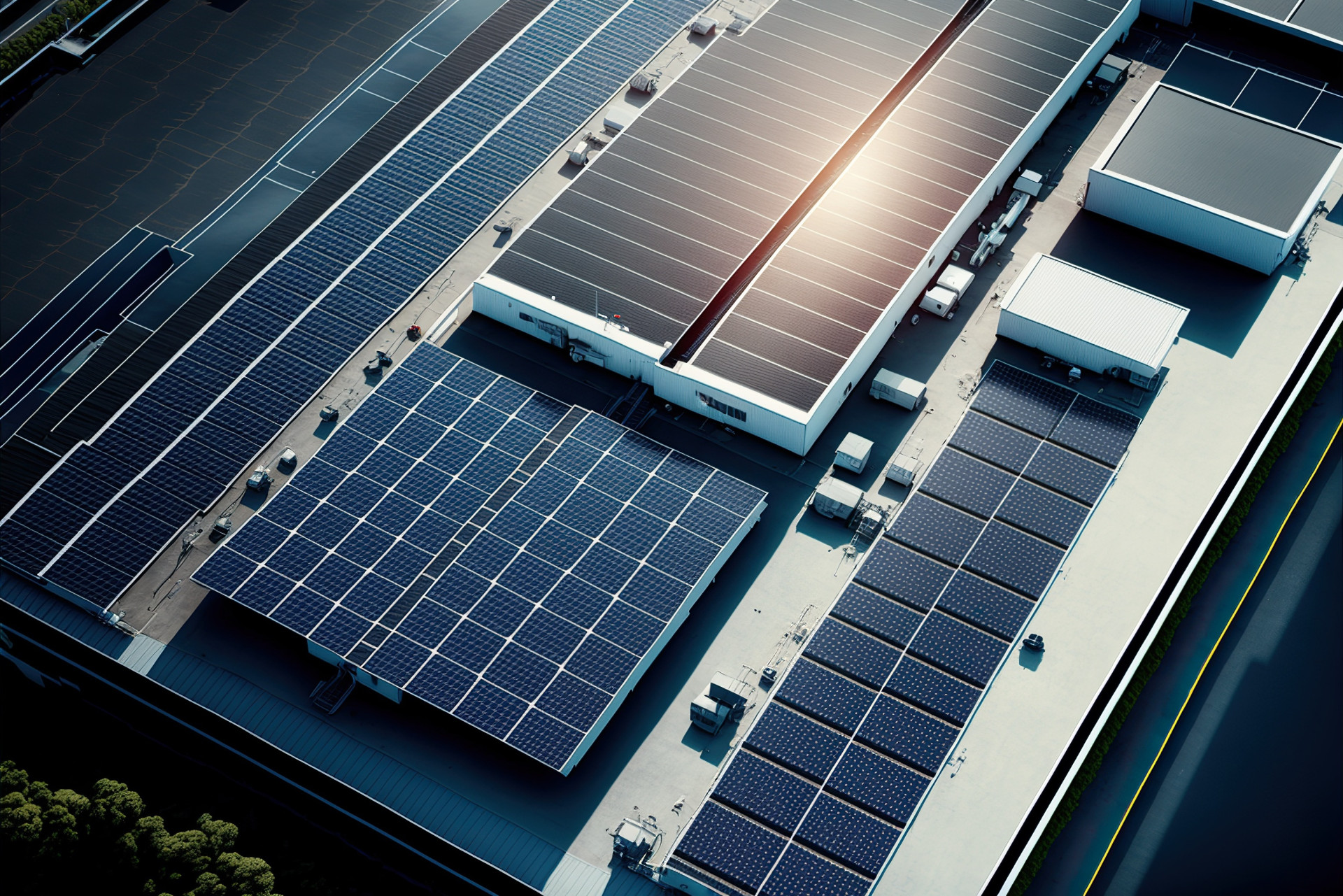Fighting the climate crisis with technology


Innovation plays an important role in the fight against global warming. A tour of a few especially promising research projects.
The analogy with the cheese bell occurred to geologist Frank Schilling before a lecture. He often takes part in panel discussions where he explains what he and his team are up to so deep underground. “You can think of the formation we work with as something like a cheese bell,” Schilling says. CO2 is fed into this cheese bell from below. It rises and gets trapped under the curved layer of rock above. “That’s how CO2 storage works,” he says. “The gas can’t get out from under it anymore.”
Frank Schilling is a professor of technical petrophysics at the Karlsruhe Institute of Technology (KIT) and was a leading expert on a method that is getting a growing amount of attention in the fight against the climate crisis: carbon capture and storage (CCS), a process in which carbon dioxide is extracted from the atmosphere and stored underground. It is a way for clever engineering to save the climate – or so it is hoped. In Norway this technology has already been in use for a long time, but in Germany it has not gone beyond a pilot plant “even though we were at the cutting edge of research in the EU for many years,” Schilling says.
Innovations can play an important role in fighting the climate crisis. To do their part, researchers in Germany are taking a variety of approaches, including not only CO2 storage but also more efficient ways of using geothermal heat, high-tech solar cells, the batteries of the future, or synthetic fuels. And it is clear that all of these technologies can only make a partial contribution to climate action; experts agree that the top priority has to be in reducing emissions. But the reverse is equally true: There is no way to win the fight without scientific research and the innovations it produces.
Photovoltaics in the energy transition
When speaking of the energy transition, Rutger Schlatmann, head of the Competence Centre Photovoltaics Berlin (PVcomB) at the Helmholtz-Zentrum Berlin, says "We’re in a crucial phase for photovoltaics now. And the good news is that the research sector in Europe, and particularly in Germany, is much bigger and stronger than one might expect given the remaining domestic industrial capacity.” Asia now leads in production, but many important innovations are conceived in the EU, according to Schlatmann. He has been conducting photovoltaics research for decades, and has to smile when he thinks back to its beginnings. “When I began to do research, almost nobody took this field seriously. But solar power has had the lowest production costs for several years now. It’s more economical than oil and gas, and much cheaper than nuclear power, even though it still has enormous potential for further technological improvements.” Researchers are working on ways to get even more energy from sunlight and to install photovoltaic systems not only on roofs but also to integrate them in facades.
Use of power-to-X technology
Many efforts involving hydrogen show similar promise. There is a lot of hope for hydrogen in the energy transition, but so far there has been no breakthrough that would make it efficient to produce at industrial scales. Typical applications include renewable energy. At peak times, when there is more solar or wind power available than is needed, the excess energy can be used to produce hydrogen via electrolysis. In the Helmholtz Association alone, many research teams are working to make the technology more usable, including teams at the Helmholtz-Zentrum Hereon in Geesthacht and the Helmholtz Centre for Environmental Research – UFZ in Leipzig. For example, the UFZ is part of a network called Hydrogen Saxony. “Our approach involves combining process engineering with biology,” says Andreas Schmid, who heads the photobiotechnology department. “We’re already thinking about applications as we do our research.” So the network also includes companies that are involved in development with a view to industrial-scale implementation.
KIT in Karlsruhe is taking a broader-based approach with Energy Lab 2.0, where expertise from all fields of energy research comes together at a huge site. The most promising ideas are analyzed, simulated and tested there. The site features a variety of battery storage units, a micro gas turbine combined heat and power plant, electrolysis systems, and complete model homes for testing how the different technologies work together. Visitors strolling through the site see a lot of high-tech containers jammed with everything that might be needed to build the electrical grids of the future. For example, there is a power-to-gas system in which surplus electricity from renewable energy sources is stored on-site in gaseous form and a power-to-liquid system for testing a similar process using a liquid storage medium. In addition to scientists from KIT, staff from Forschungszentrum Jülich and the German Aerospace Center (DLR) also work at Energy Lab 2.0. Far and wide, such a concentration of expertise can be found nowhere else; it has the largest renewable energy research infrastructure in all of Europe.
Further use and storage of CO2
In a laboratory just a few kilometers away, KIT researchers are working on a way to process CO2 usefully immediately after it is extracted from the atmosphere. In a multistage process, their NECOC (NEgative CarbOn dioxide to Carbon) research project yields a material that is in high demand: pure carbon. “It’s needed to produce batteries and building materials and in the paint industry and agriculture,” says project coordinator Benjamin Dietrich. “So far, most carbon has come from fossil sources.” The approach taken by the Karlsruhe researchers kills two birds with one stone by removing CO2 and simultaneously producing a sought-after raw material. The process, which made headlines all over Germany, has demonstrated its worth on a small scale. With their test system, the researchers can produce half a kilogram of carbon per day. They plan to gradually scale up their operation. Processes like this are designated CCU – carbon capture and utilization; the carbon dioxide is put to use as part of a new product. There is no shortage of ideas for such products. NECOC is seen as having a bright future in this relatively young field.
The history of CO2 storage goes back much further, nearly three decades. It began in Norway, where the government introduced a CO2 tax. A company that produced natural gas decided to bury the carbon dioxide underground. “A lot of CO2 finds its way to the surface when natural gas is extracted. It’s usually separated from the natural gas and then escapes into the atmosphere,” says Schilling, the expert from KIT. “But in this case, they drilled a second hole and sent it back underground – into a different layer than the one the gas comes from.” Thick and impermeable rock layers made sure the CO2 stayed underground – the cheese bell effect.
Schilling played a leading role in a large-scale research project that started afterward in Germany. A pilot CO2 storage plant with several 800-meter-deep holes was built in Ketzin, about 40 kilometers from Berlin. The Helmholtz Centre Potsdam, German Research Centre for Geosciences (GFZ) backed the project, in which engineers and scientists from the fields of geology, geophysics, geochemistry and simulation took part. When it ended in 2017, the project was a complete success. The researchers gained an ever better understanding of the processes going on underground as they investigated how some of the CO2 was incorporated into pores in the rock, how some was dissolved in water, and how the CO2 was ultimately mineralized into limestone.
CCS technology has not been put to use in Germany due to political resistance, even though there are many places where it could be effective. Cement factories, power plants that burn fossil fuels, and other factories that emit a lot of carbon dioxide could capture the emitted gas on the spot and store it underground. Experts estimate that 6 to 12 billion tons of carbon dioxide could be safely stored underground in Germany.
In any case, according to Schilling, the technology is ready for use in demonstration projects. To apply it at larger scales, further development is still needed.
Einsatz von Power-to-X Technologie
Ähnlich vielversprechend sind viele Ansätze in Sachen Wasserstoff. Der gilt als Hoffnungsträger für die Energiewende, noch fehlt aber der Durchbruch, um ihn effizient in industriellem Maßstab herstellen zu können. Klassische Einsatzbeispiele sind bei den erneuerbaren Energien zu finden: Wenn in Spitzenzeiten mehr Sonnen- oder Windenergie zur Verfügung steht, als gerade benötigt wird, lässt sich mit dieser Energie per Elektrolyse Wasserstoff gewinnen. Allein in der Helmholtz-Gemeinschaft arbeiten zahlreiche Teams von Forschenden daran, die Technik besser nutzbar zu machen – sei es beim Helmholtz-Zentrum Hereon in Geesthacht oder beim Helmholtz-Zentrum für Umweltforschung – UFZ in Leipzig. Das UFZ beispielsweise ist an einem Verbund namens „Hydrogen Saxony“ beteiligt. „Unser Innovationsansatz ist die Verbindung der Verfahrenstechnik mit der Biologie“, sagt Andreas Schmid, der das Department für Photobiotechnologie leitet. Und: „Wir denken die Anwendung schon jetzt mit.“ In dem Netzwerk arbeiten deshalb auch Unternehmen mit, die sich an der Entwicklung beteiligen und die Umsetzung in industriellem Maßstab im Blick behalten.
Einen breiteren Ansatz verfolgt das Energy Lab 2.0 am KIT in Karlsruhe. Ein riesiges Gelände ist das, auf dem alles an Knowhow zusammenfließt, was es in der Energieforschung gibt. Zu den vielversprechendsten Ideen wird hier analysiert, simuliert und getestet: Verschiedene Batteriespeicher gibt es hier, es gibt eine Mikrogasturbinen-Blockheizkraftwerk, es gibt Elektrolyse-Anlagen und ganze Musterhäuser, in denen das Zusammenspiel der verschiedenen Technologien erprobt wird. Wer über das Gelände spaziert, sieht lauter Hightech-Container, in denen auf engstem Raum alles das aufgebaut ist, worauf die Stromversorgung der Zukunft gebaut sein könnte. Eine Power-to-Gas-Anlage beispielsweise steht hier, in der überzähliger Strom aus regenerativen Energien direkt an Ort und Stelle quasi in Gas gespeichert wird, und eine Power-to-Liquid-Anlage, in der ein ähnliches Verfahren mit einem flüssigem Speichermedium erprobt wird. Neben den Wissenschaftler:innen vom KIT sind hier noch das Forschungszentrum Jülich und das Deutsche Zentrum für Luft- und Raumfahrt (DLR) beteiligt – eine dichtere Bündelung von Expertise gibt es weit und breit nirgendwo anders, europaweit ist das Energy Lab 2.0 die größte Forschungsinfrastruktur für erneuerbare Energien.
Weiterverwendung und Speicherung von CO2
Ein paar Kilometer entfernt in einem Karlsruher Laborgebäude arbeiten KIT-Forschende daran, das CO2 aus der Atmosphäre gleich nützlich weiterzuverarbeiten: Im Forschungsprojekt NECOC („NEgative CarbOn dioxide to Carbon“) entsteht in einem mehrstufigen Verfahren reiner Kohlenstoff – ein Material, das begehrt ist: „Benötigt wird er bei der Produktion von Batterien, in der Farbindustrie, im Agrarsektor oder auch bei der Herstellung von Baustoffen“, sagt Benjamin Dietrich, der das Projekt koordiniert. Und: „Bislang stammt der Kohlenstoff meist aus fossilen Quellen.“ Mit dem Karlsruher Ansatz lassen sich also zwei Fliegen mit einer Klappe schlagen: CO2 wird abgebaut und zugleich entsteht ein gefragter Rohstoff. Bewährt hat sich das Verfahren, das bundesweit für Schlagzeilen sorgte, bislang im kleinen Maßstab: Ein halbes Kilo Kohlenstoff pro Tag erzeugen die Forschenden in ihrer Versuchsanlage. Nach und nach soll der Betrieb jetzt vergrößert werden. Verfahren wie diese werden auch als CCU bezeichnet – Carbon Capture and Utilization. Das Kohlendioxid wird dabei weiterverwendet, es wird zum Baustein für ein neues Produkt. Ideen dafür gibt es viele, NECOC gilt als besonders zukunftsträchtiges Beispiel in diesem Feld, das noch recht neu ist.
Wesentlich länger reicht die Geschichte der CO2-Speicherung zurück, nämlich fast drei Jahrzehnte. Sie begann in Norwegen, wo die Regierung eine CO2-Steuer einführte. Eine Firma, die Erdgas förderte, beschloss daraufhin, das Kohlendioxid unter der Erde zu versenken. „Wenn Erdgas gefördert wird, gelangt dabei viel CO2 mit an die Oberfläche. Es wird üblicherweise vom Erdgas abgetrennt und entweicht dann in die Atmosphäre“, erklärt Frank Schilling, der Experte vom KIT. „Hier aber hat man es über eine zweite Bohrung wieder zurück unter die Erde gebracht – in eine andere Schicht als jene, aus der das Gas kommt.“ Dicke, undurchlässige Gesteinsschichten sorgten dafür, dass das CO2 unter der Erde bleibt – das ist der Effekt des umgestülpten Kochtopfs.
Frank Schilling war federführend bei einem großangelegten Forschungsvorhaben dabei, das danach in Deutschland startete: Im Ort Ketzin, rund 40 Kilometer entfernt von Berlin, entstand eine Pilotanlage zur CO2-Speicherung mitsamt mehreren Bohrungen, die rund 800 Meter tief in die Erde reichten. Das Helmholtz-Zentrum Potsdam, Deutsches GeoForschungsZentrum GFZ stand hinter dem Projekt, an dem Ingenieure:innen und Wissenschaftler:innen aus den Bereichen Geologie, Geophysik, Geochemie und Modellierung beteiligt waren. 2017 lief das Vorhaben aus, es war ein voller Erfolg: Immer besser durchdrangen die Forschenden die Prozesse, die unter der Erde stattfinden; sie untersuchten, wie Teile des CO2 zwischen Gesteinsporen eingelagert wurden, wie andere Teile im Wasser gelöst und wie das CO2schließlich mineralisiert wurde – eingebacken ins Gestein, so wie einst beim Kalkstein.
Die Anwendung der CCS-Technologie ist in Deutschland bislang am politischen Widerstand gescheitert. Dabei böte sie sich an vielen Einsatzorten an: Zementfabriken, aber auch Kraftwerke mit fossilen Energieträgern und andere Fabriken mit großem Ausstoß an Kohlendioxid könnten das freigesetzte Gas gleich an Ort und Stelle einfangen und unter die Erde bringen. Sechs bis zwölf Milliarden Tonnen des Treibhausgases, so schätzen Expert:innen, lassen sich in Deutschland sicher unter der Erde speichern.
Die Technologie dazu jedenfalls, sagt Frank Schilling, steht für Demonstrationsvorhaben einsatzbereit parat; um sie in noch größeren Dimensionen zu nutzen, sind noch einige Entwicklungsschritte notwendig.
